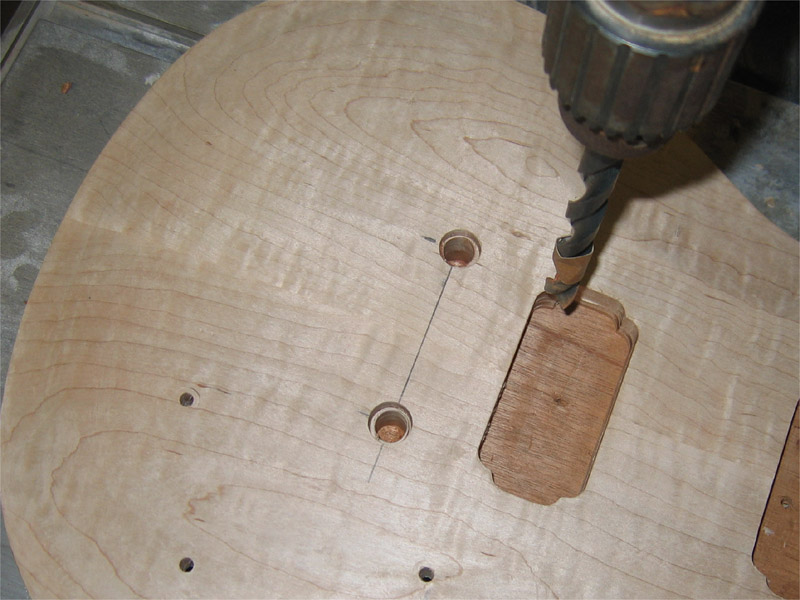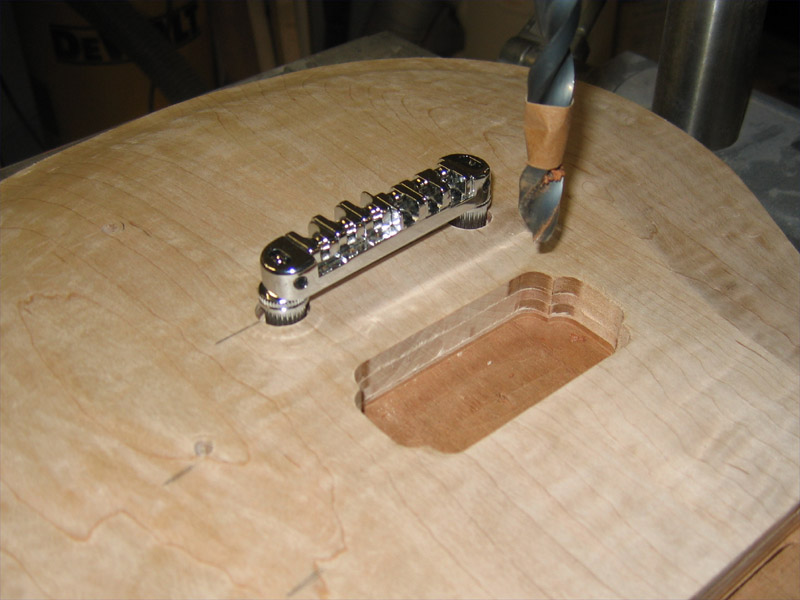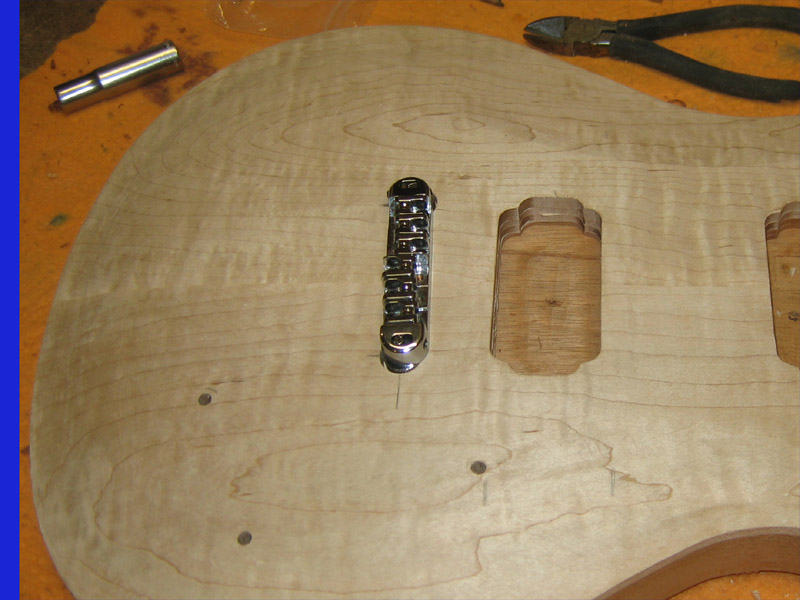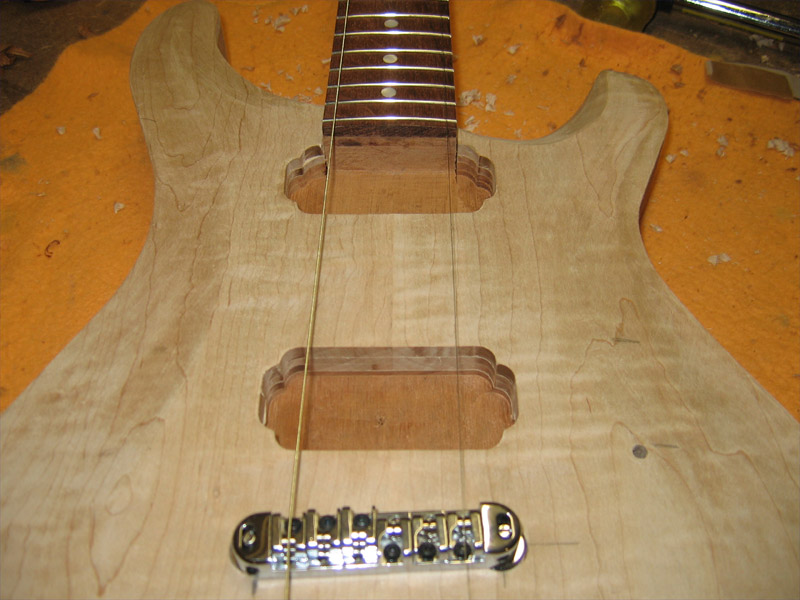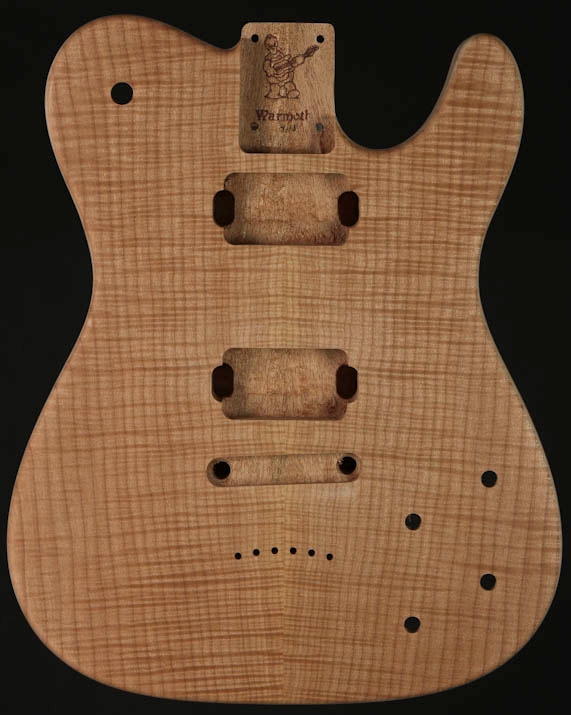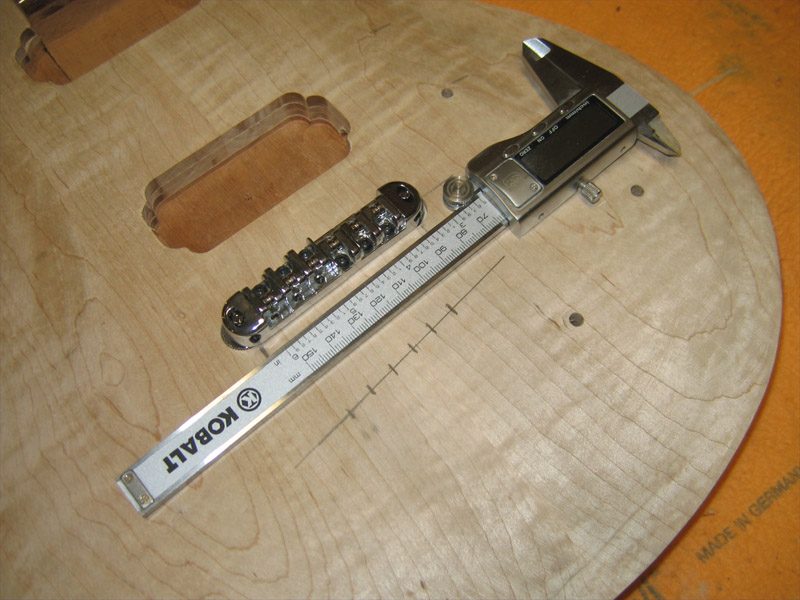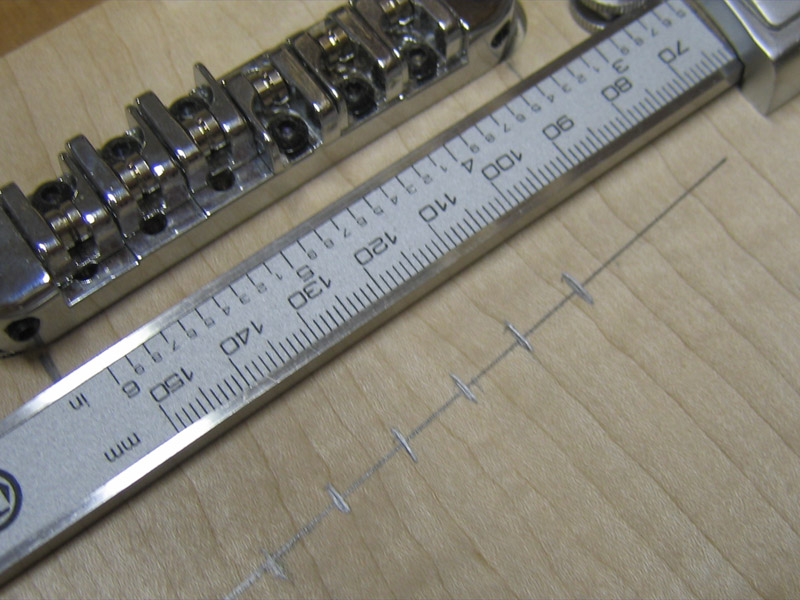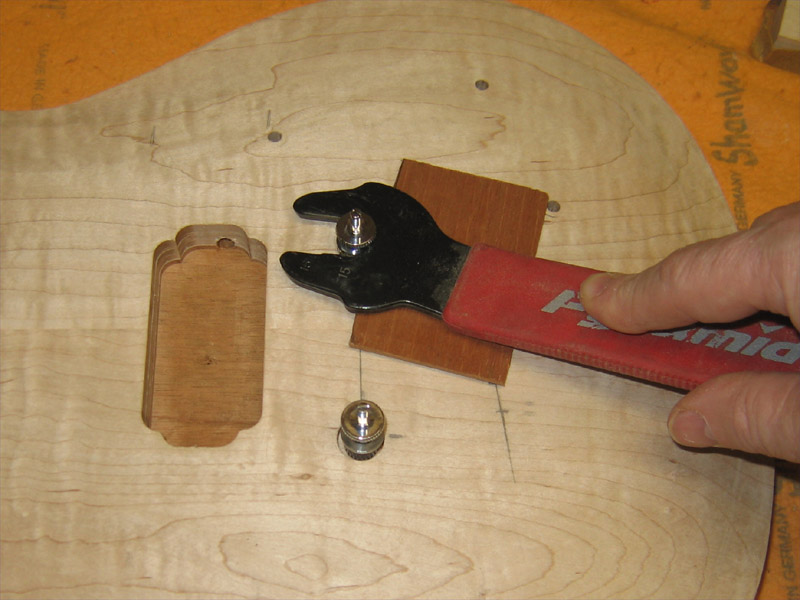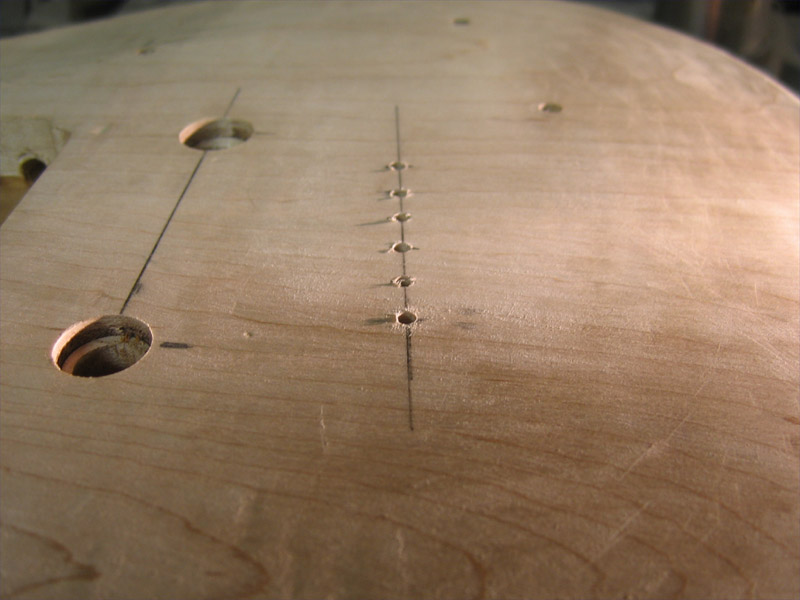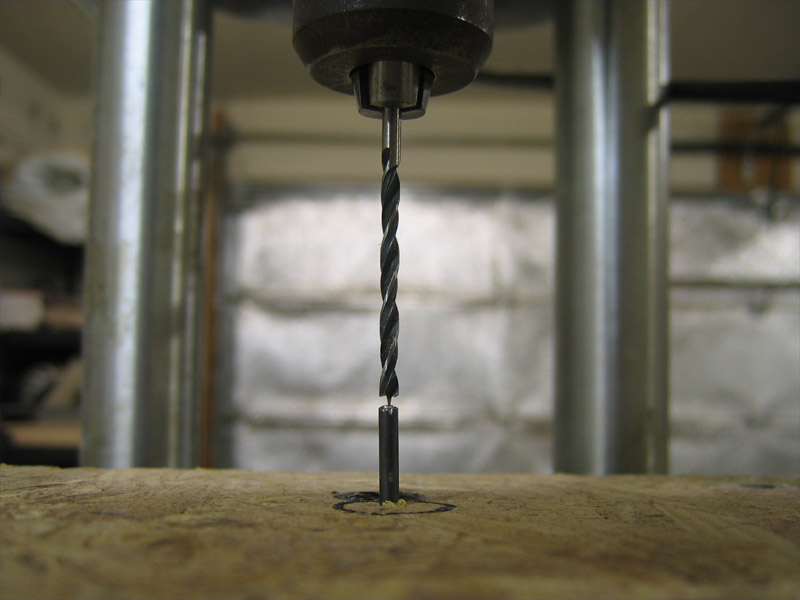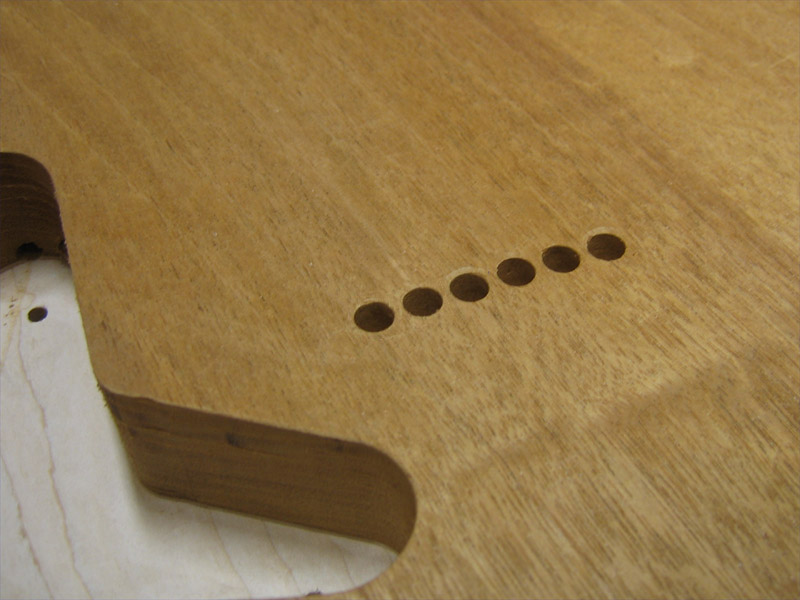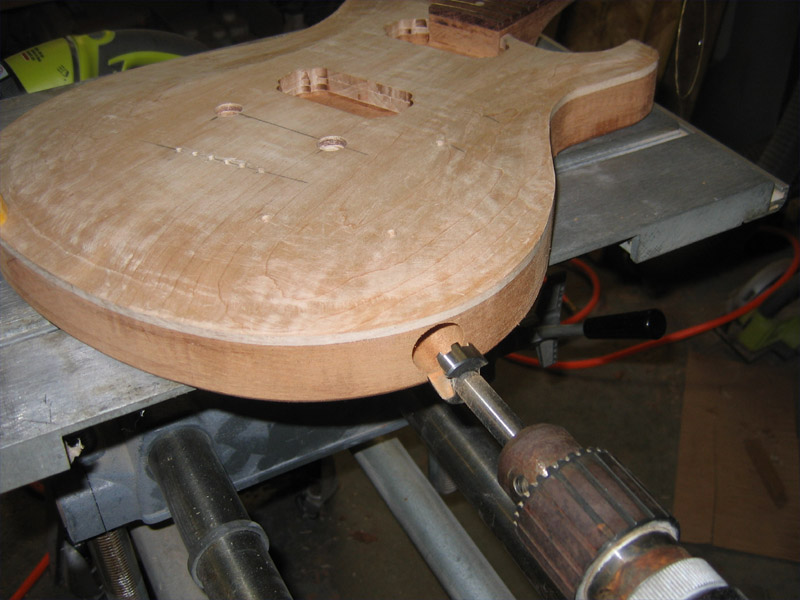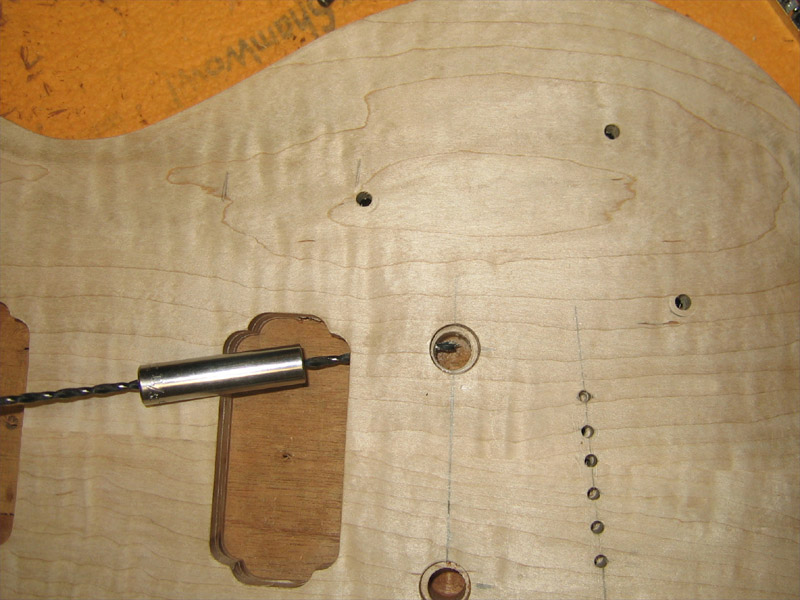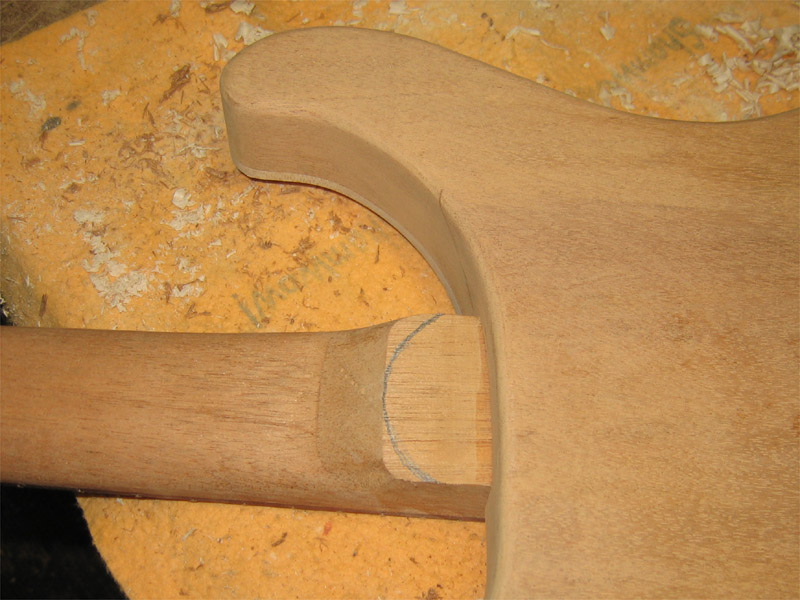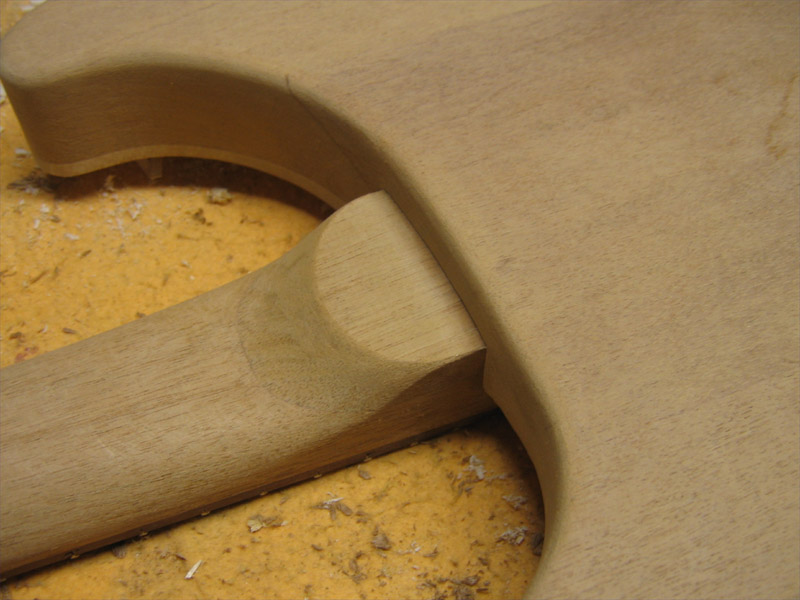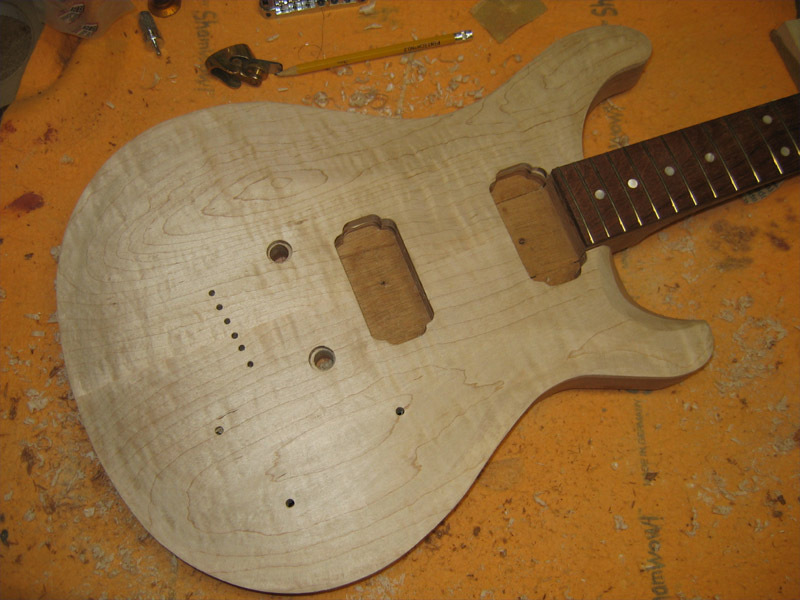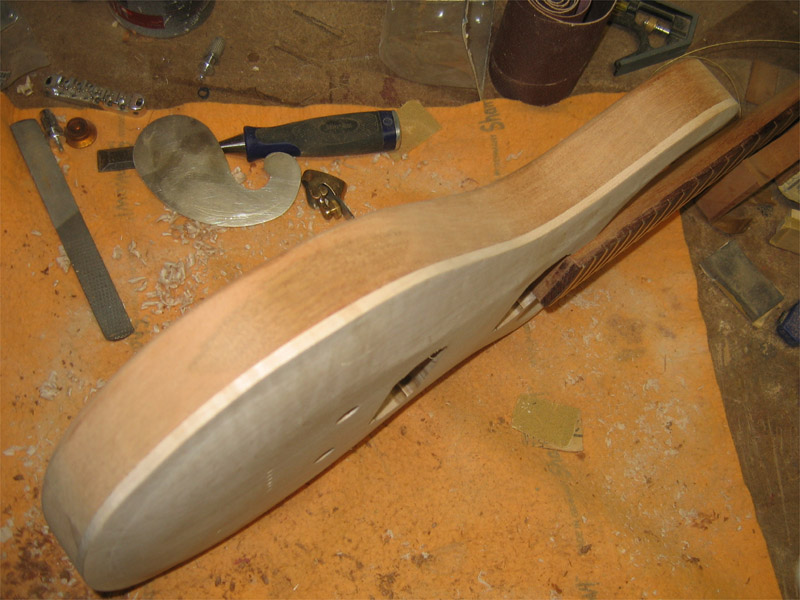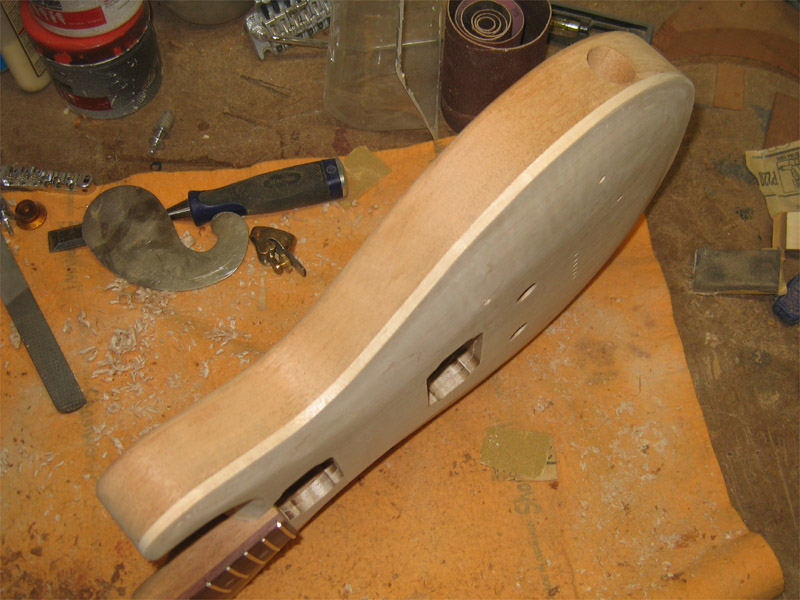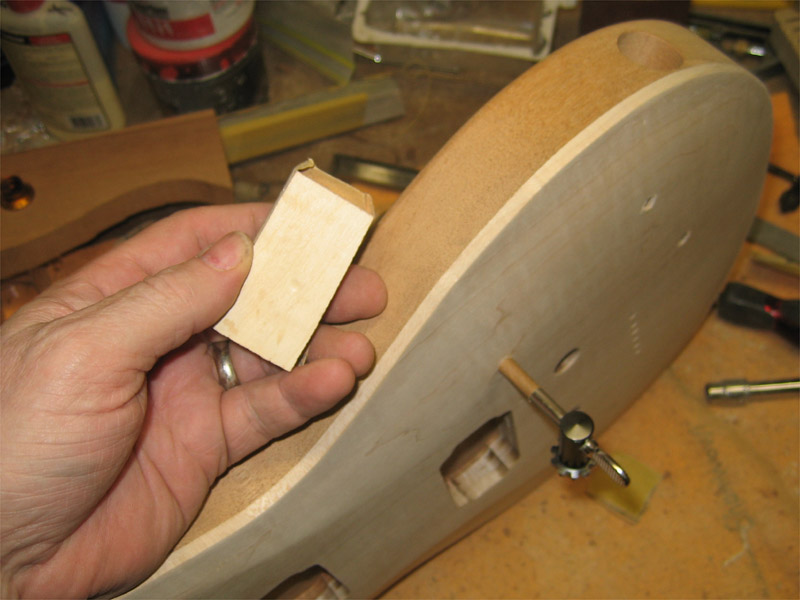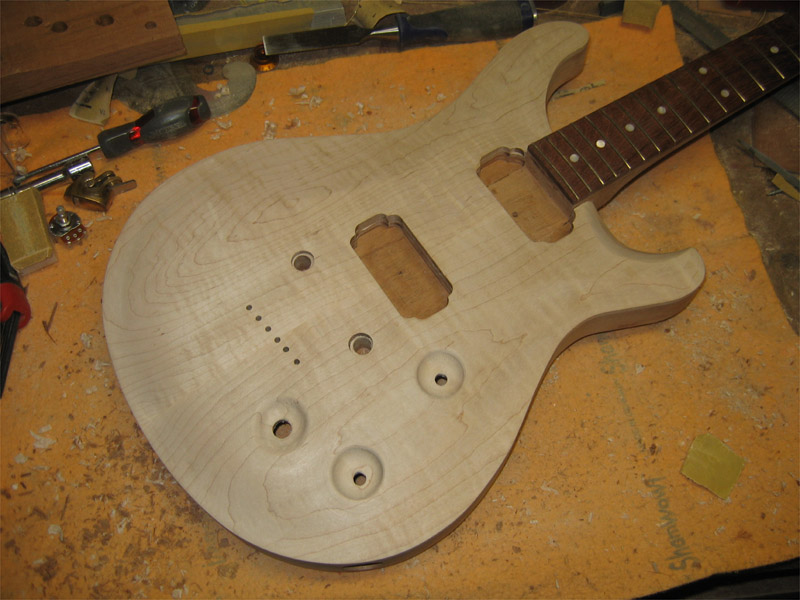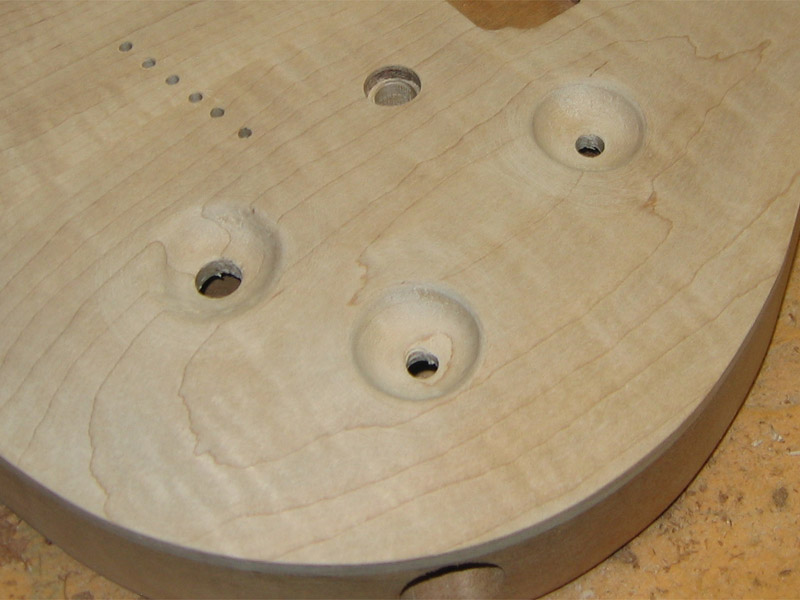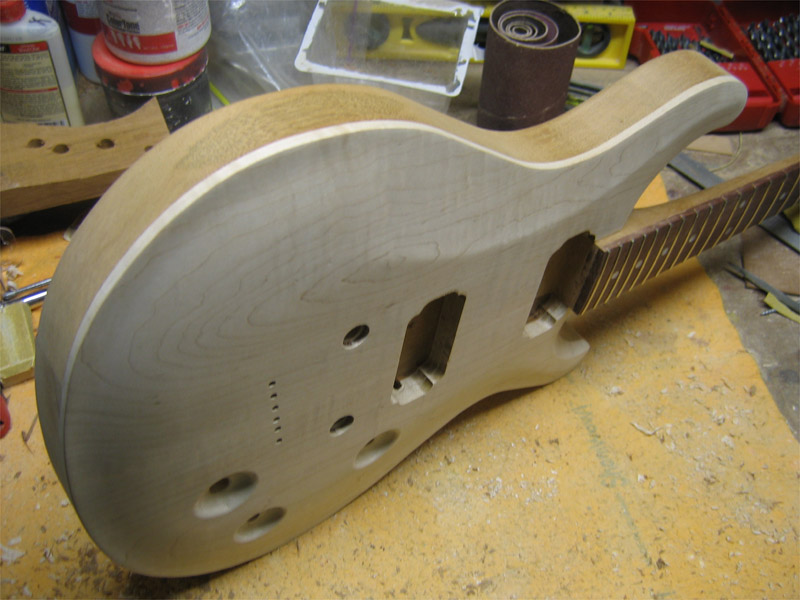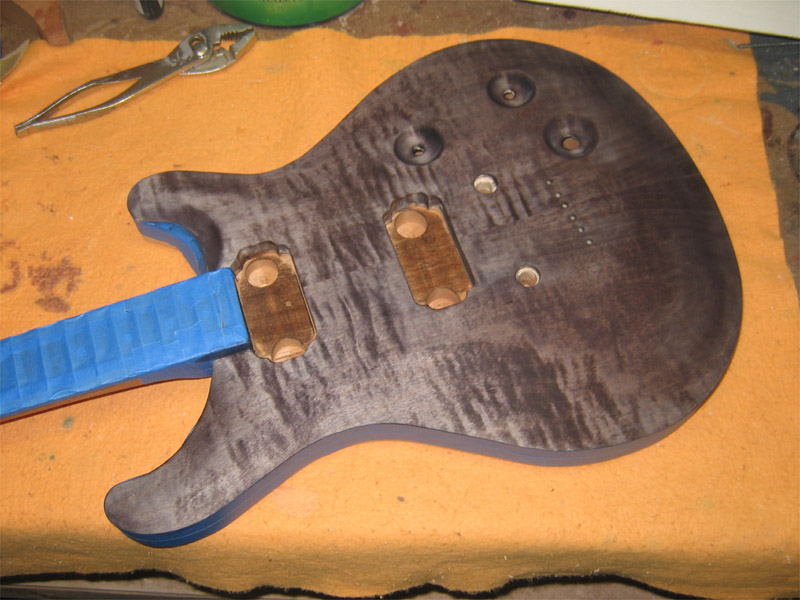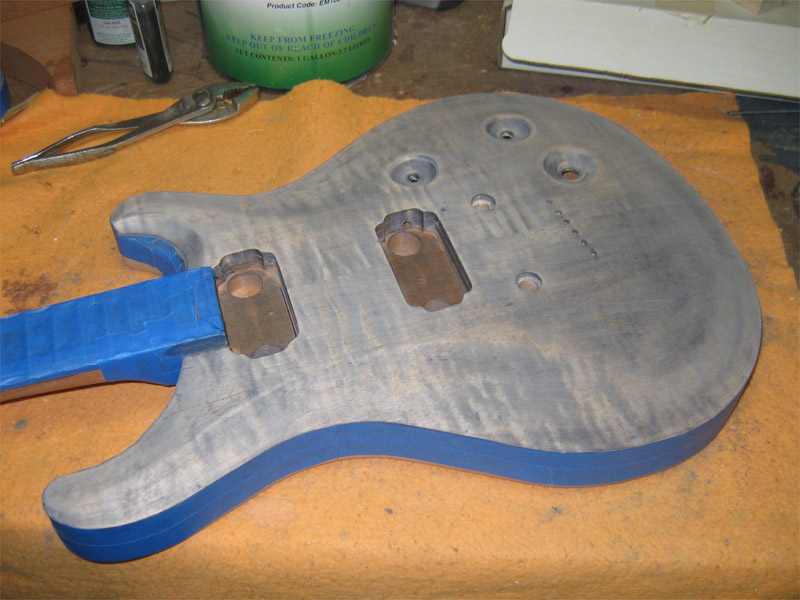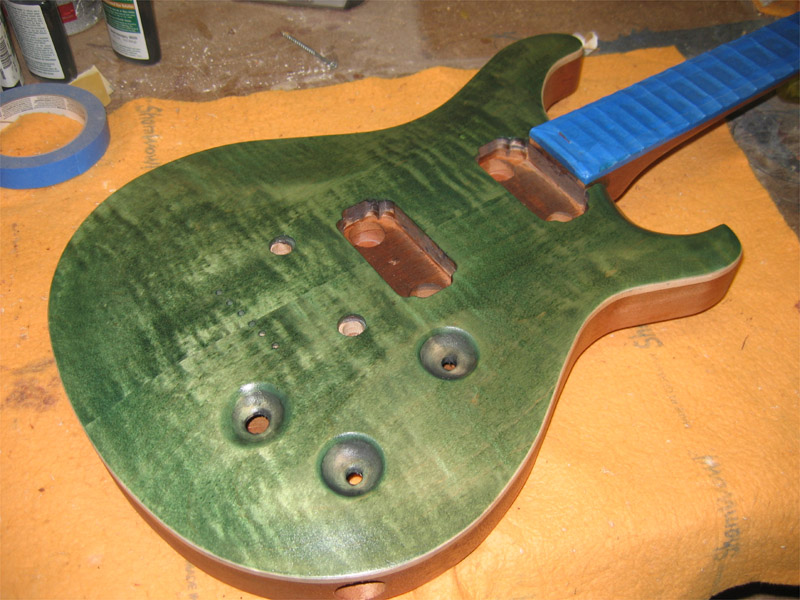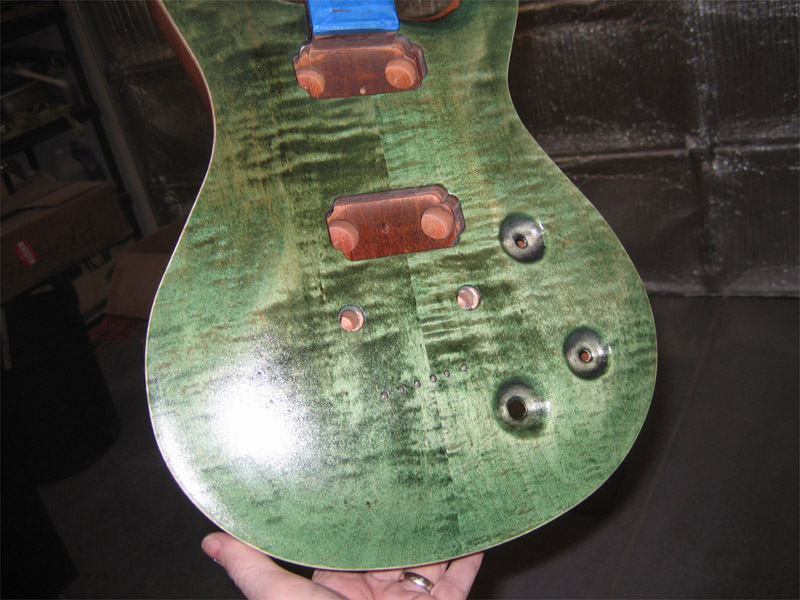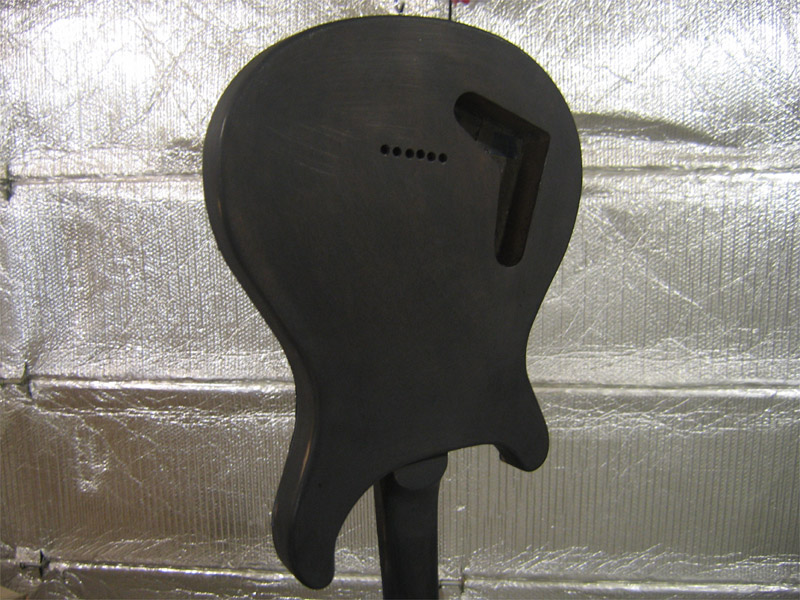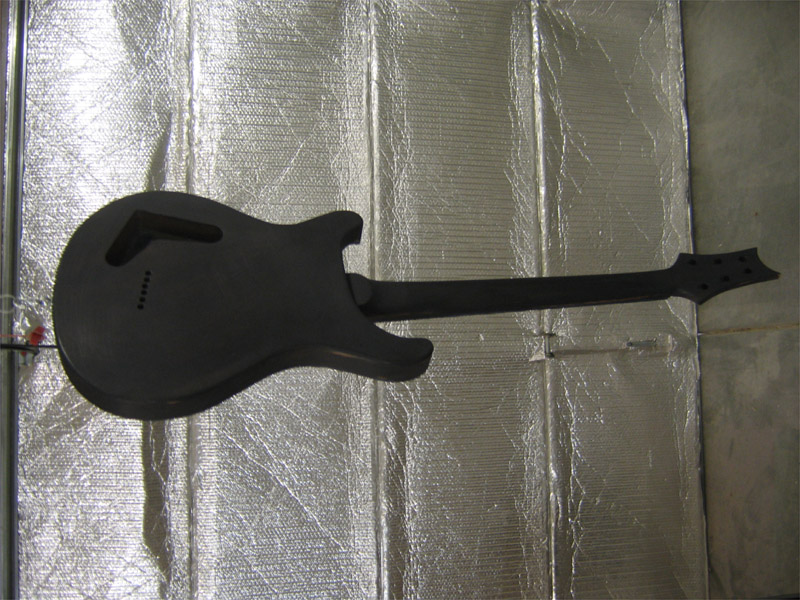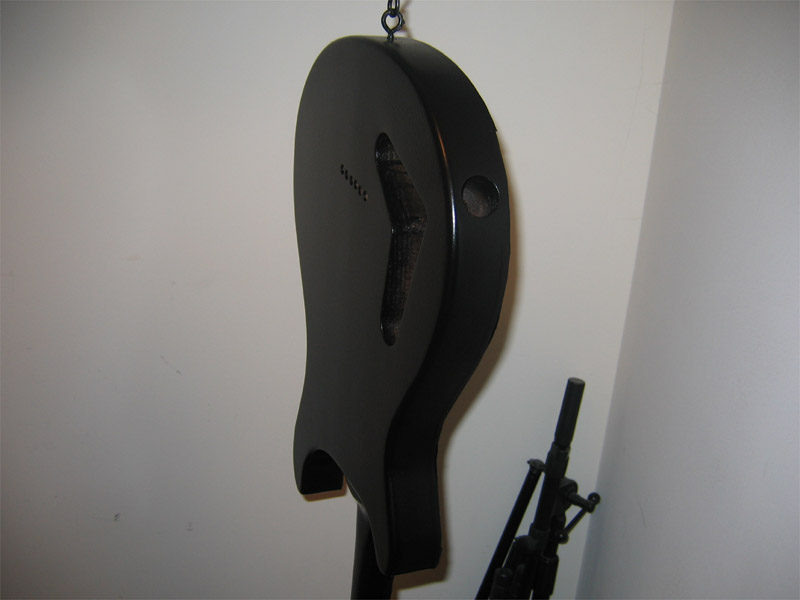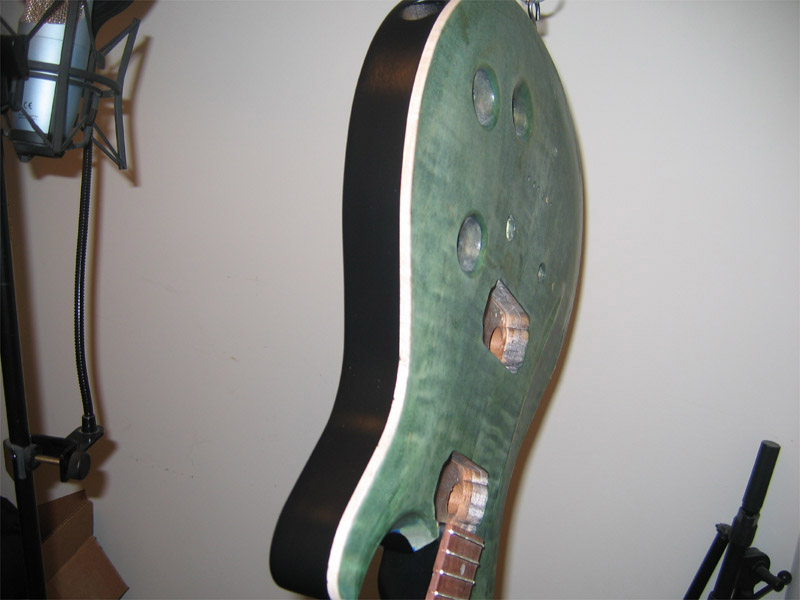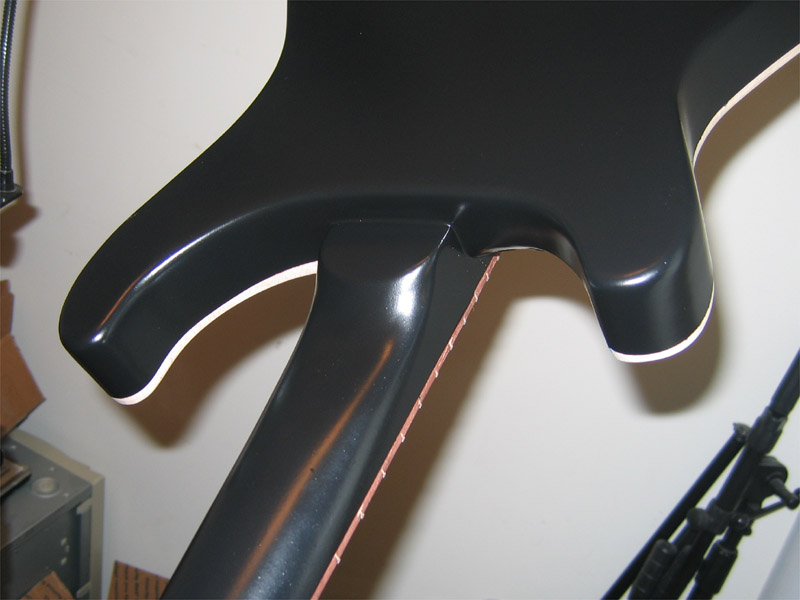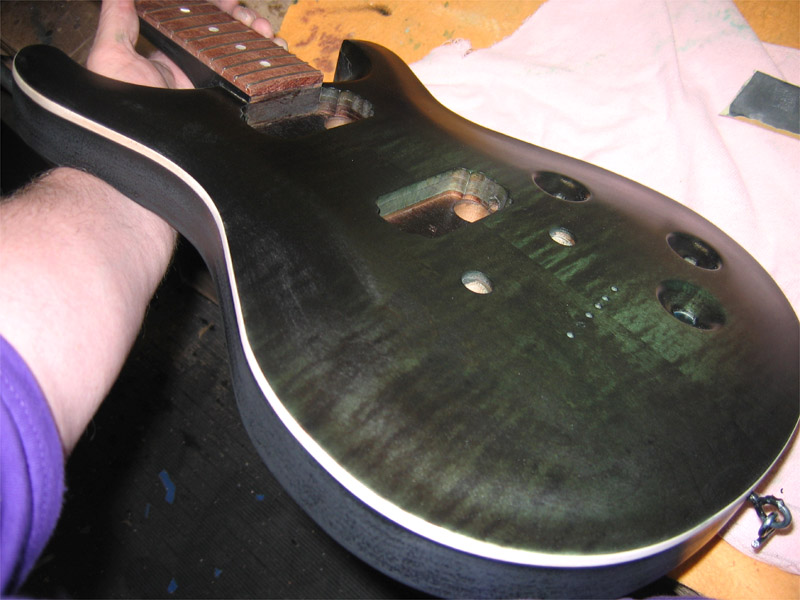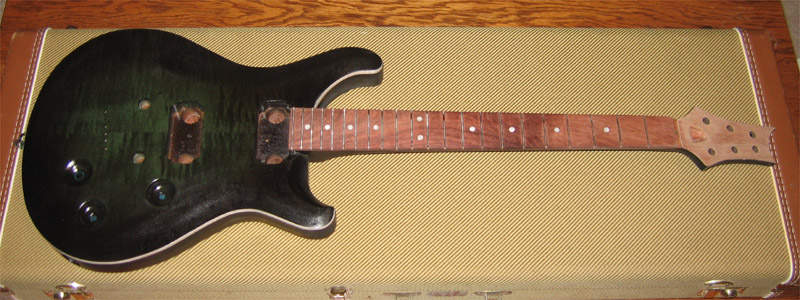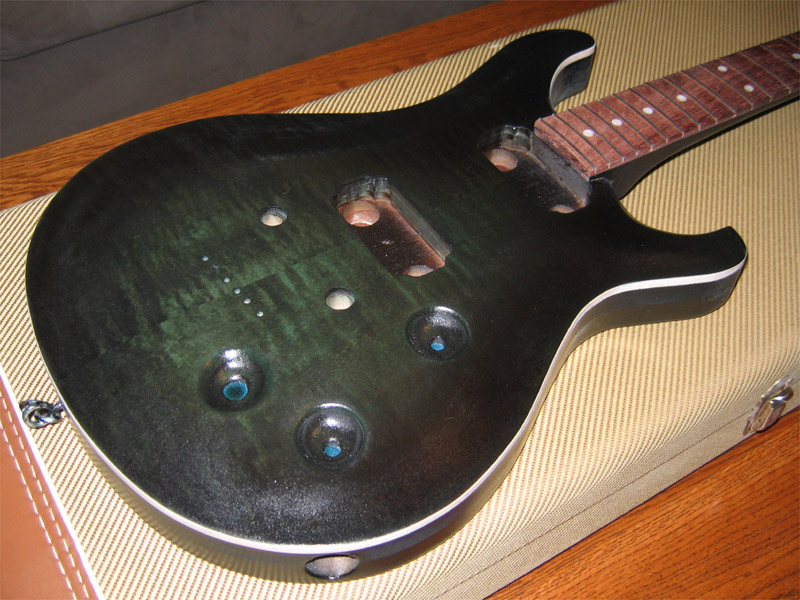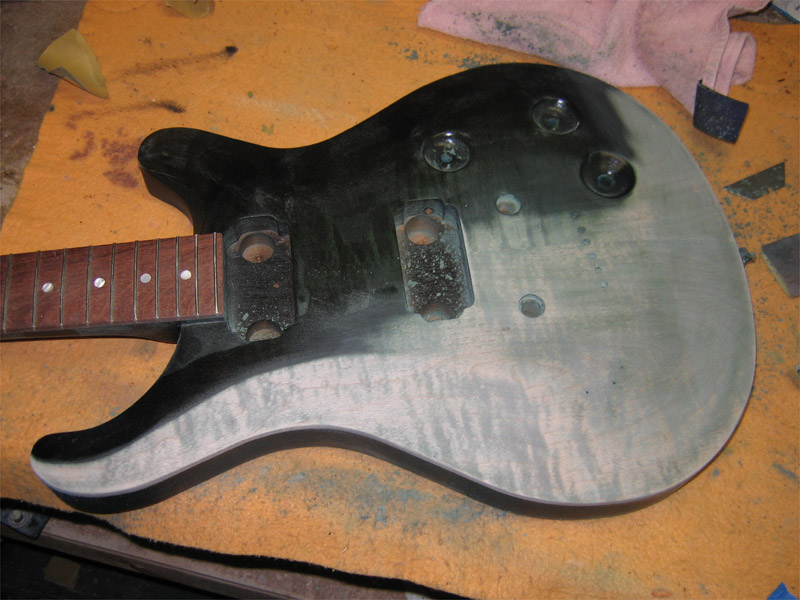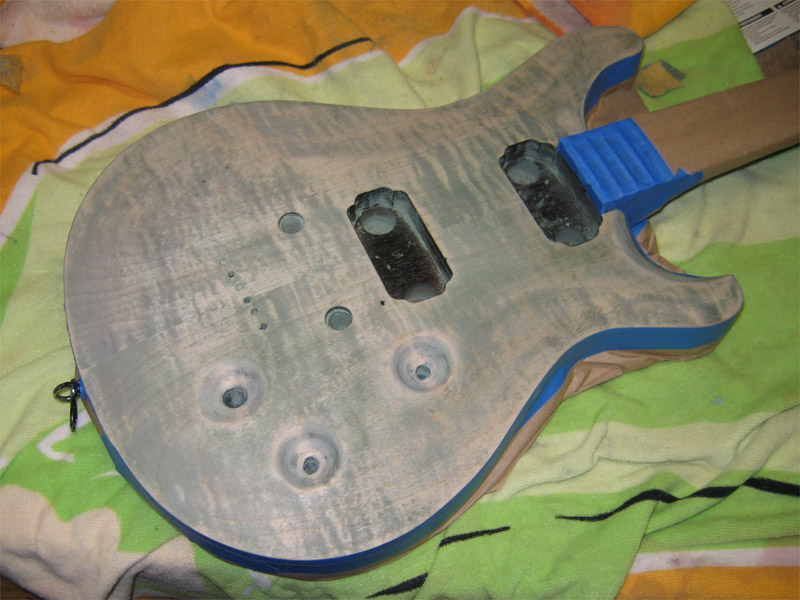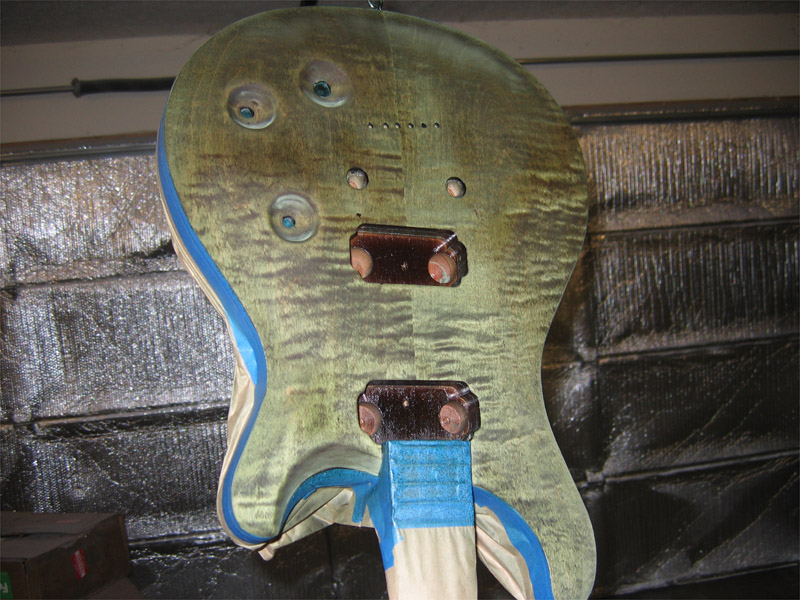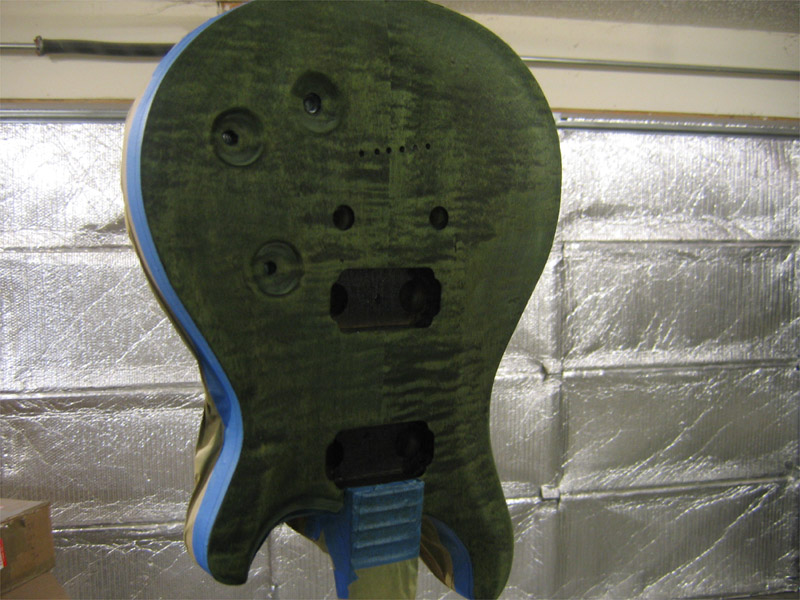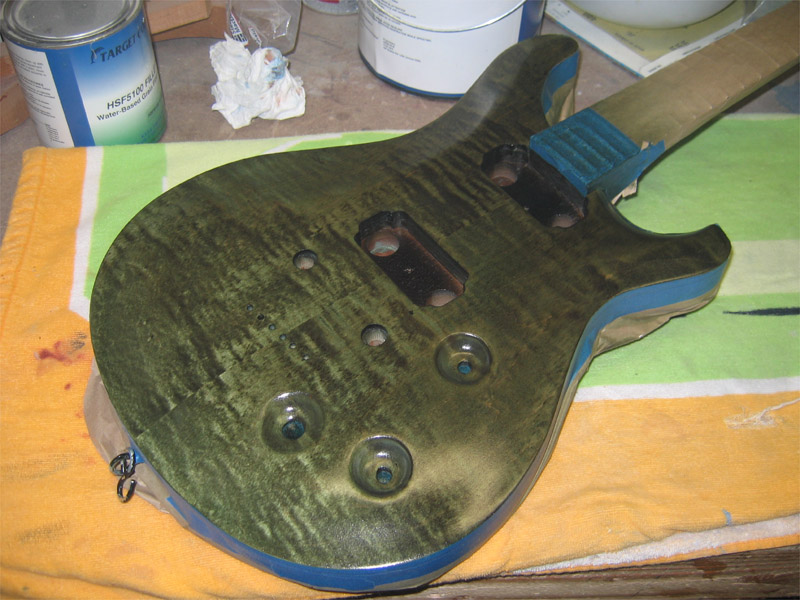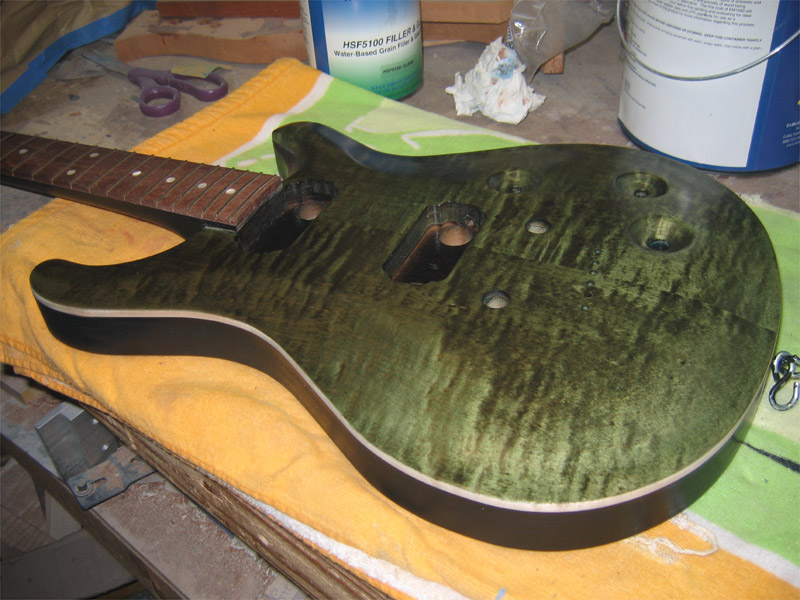Time to mount the bridge. I didn't use the srting jig this time because I haven't drilled it for the string spacing of the this bridge, so a few pieces of tape will work. The strings are taped down at the net slot close to 1/8" off the edge of the fretboard.
Looks good. They will actually be closer to the edge when the nut is cut and they are under tension. They're not any tighter right now than the tape can hold.
I set up the neck so I could get the bridge right down on the top if I wanted to. So this means countersinking the studs. I started by marking the locations. My placement is scale + 1/16" on the treble side and scale + 1/8" on the bass side. I started the locations with a 1/2" forstnet bit. This will give me a ledge to set the bit later in the process.
Then I was able to drill out the center with a 5/32" bit to allow the upside down stud to sit down inside the top. This way, I can tell when the recess is deep enough for the insert and adjustment wheel.
With the forstner bit installed again, I can center it up in the initial recess and slowly drill out the recess until it's deep enough. Sliding a square corner up against the stud tells me if it's still proud of the top or not.
Getting the camera too close without being in macro mode makes the picture blurry
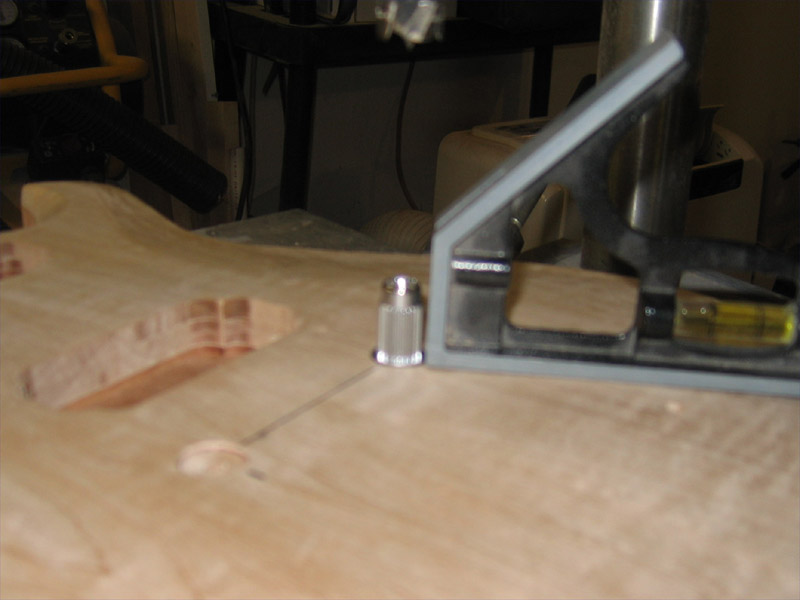




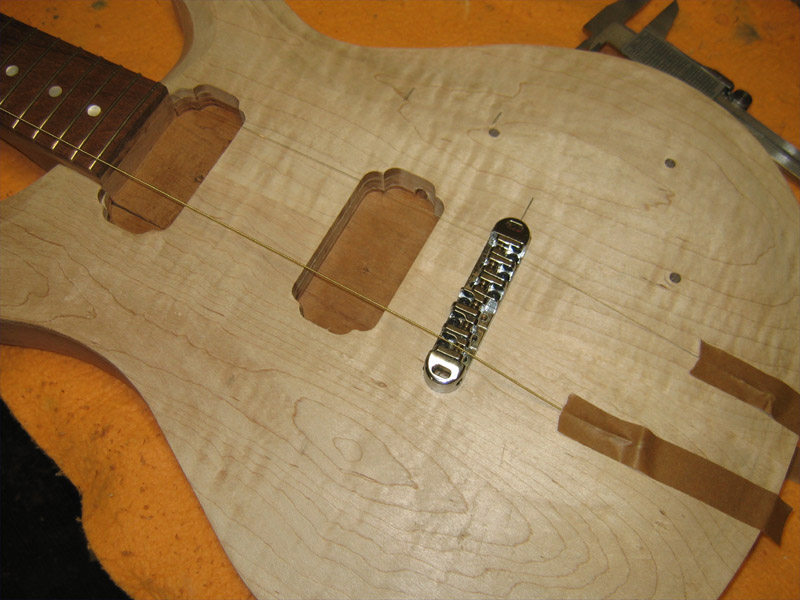
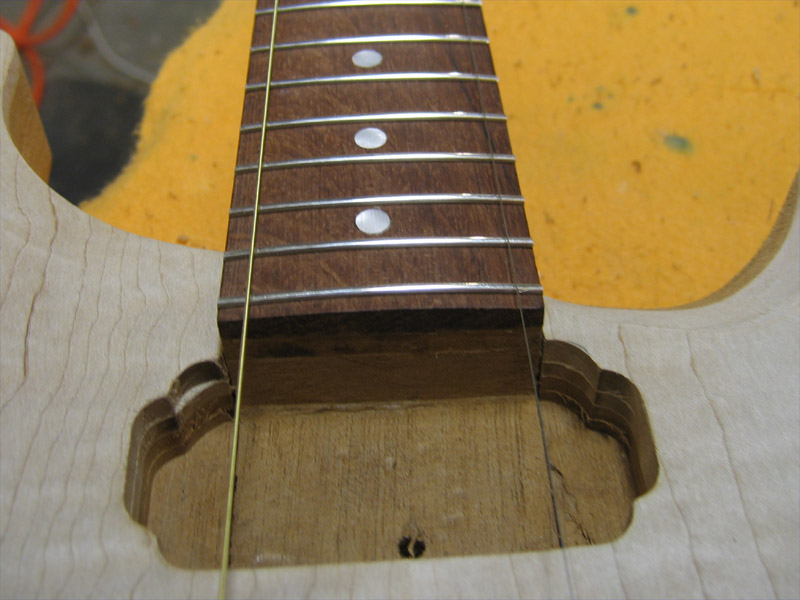
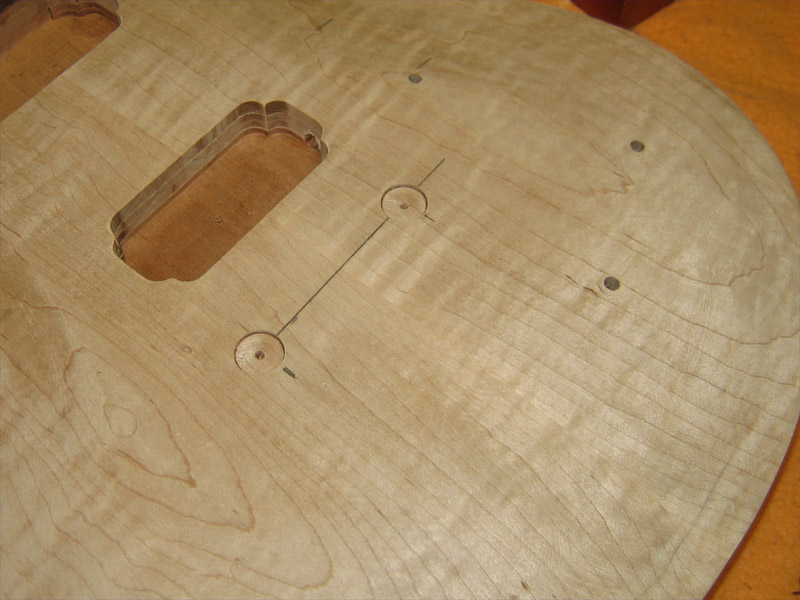
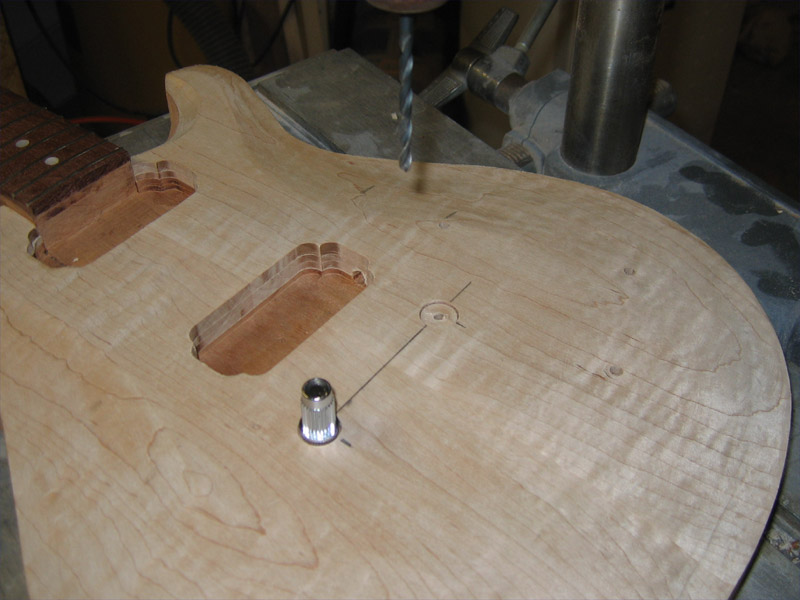


 Reply With Quote
Reply With Quote